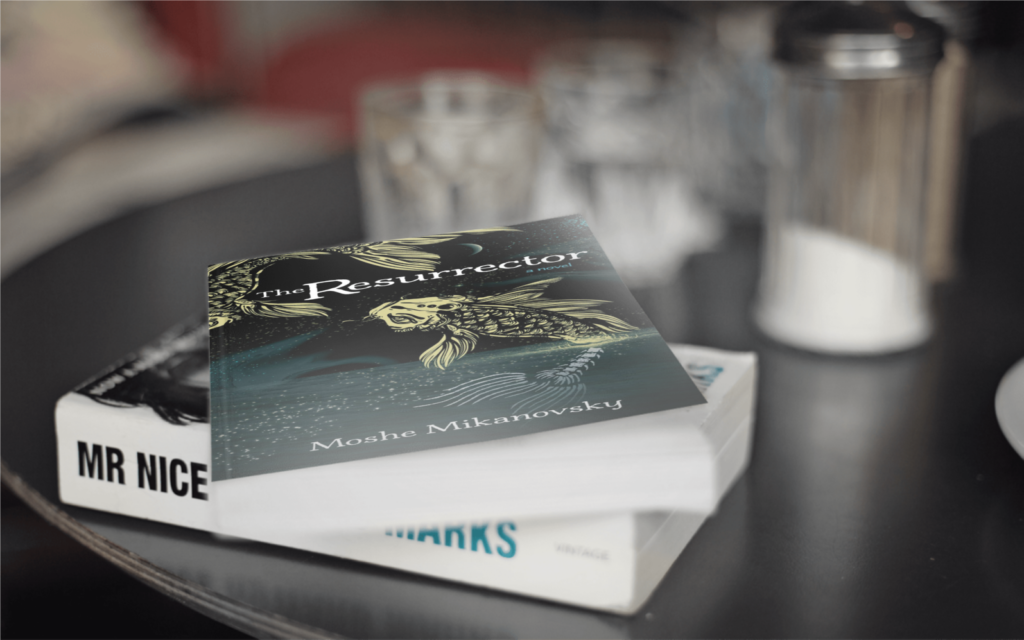
Author Series: Write What You Know
Some people, when I tell them about the story of The Resurrector, ask me if it is based on a real story. Well, if you believe in life after death, and the ability to bring someone from the dead, then you could believe it is based on a real story. But of course, this is just a belief; no one in modern times came back from the afterlife with proof in hand, showing us what happens at the end of one’s days.
We all have the choice to believe it or not. The bottom line, for me, is that the story came from my imagination, not rooted in any realness.
But then again, imagination has its boundaries. World building is such a complicated undertaking! I admire fantasy and sci-fi writers who can build, and sustain over several epics, whole universes. I don’t know if I will ever be able to do that. Even writing about real places that I’ve never visited, or times in history that I’ve never lived in, is challenging! This is why, when I started writing The Resurrector, I took the easiest route for me, and wrote about what I know.
And what I know is the life I was born into and grew up in. A 70s kid in Israel, in the most religious city called Bnei Brak, my childhood was a sheltered one. My family was modern orthodox, which means we kept the Shabbat and all the holidays, went to synagogue, kept kosher, wore a kippah, attended boy-only schools (and my sisters girls-only schools) and later on a yeshiva high school. But being modern, it also meant our kippahs were knitted (not black), we wore modern clothes, watched TV and went to the movies, my father and all my friend’s fathers worked in normal jobs (rather than learned in a yeshiva), at school we learned both Jewish religious studies and general studies to pass our matriculation tests, and then went to the army like all secular men.
She would skip ahead in front of them, running along the white divider line in the middle of the road while they strolled behind, claiming the street to themselves like the rest of the city’s pedestrians.
—The Resurrector
And when I joined the IDF, that bubbled life shattered, but in a good way. For the first time in my life, I was with other young men and women that were not exactly like me. We went through some great times and some tough times (first Gulf War!) and this made us stronger.
In The Resurrector I drew on what I knew. The Levi family comes from the same background I come from. They live in a very similar apartment, in a similar building on a street I can imagine in my old neighborhood. Even the old ladies passing by the house, the buses and the running kids, you could probably still find them these days in the same locations I remember them. The Mediterranean sea with its golden sandy beaches and the Tel Aviv promenade, the army base in the north and the kibbutz in the south, they are all there, some unchanged, some have gone through excessive development and modernization. Also the fictional locations in the book—the Ashlag synagogue, the yeshiva high school, the hospital—all have pieces that are based on real places of my childhood.
The original Old Ashlag synagogue, or as we called it, Ashlag for short, was built in the mid-nineteen-thirties and is in the heart of Bnei Brak, on the main street. By the time Nir was five, its front façade was dark gray from the pollution of passing vehicles, its pink marble an unrecognizable mix of brown and black, covered with centuries of grime and remnants of posters and signs that were glued to it.
—The Resurrector
When I turned fourteen years old I moved to a yeshiva school with dorms and stayed away from home. I spent the rest of my school years away from home, coming back for a weekend every fortnight. You can imagine how well I knew the school, the dorms, the way boys behaved. Even after more than thirty years, I can still remember the food we ate, the songs we sang, the atmosphere we all shared.
While I run, I glance inside the open rooms. There are more boys in them. Some are studying, their heads buried in large stacks of books on their desks. A couple of boys are fighting on the floor between the beds, pinning each other in a deadlock using hands, legs, and shoulders. Their friends cheer this name or that, not trying to break up the fight but encouraging it further.
—The Resurrector
It has been many years now, twenty five to be exact, since I moved from Israel to North America. But what I’ve learned while writing The Resurrector is that our childhood memories are stronger than many things. We can bring them back, find some stories in them, and with a bit of imagination, fill in some of the gaps. And this can make a great source for story telling.
I hope you will enjoy reading about my childhood through a completely fictional story. I challenge you to find in the pages of The Resurrector what is real and what is not. Can you?